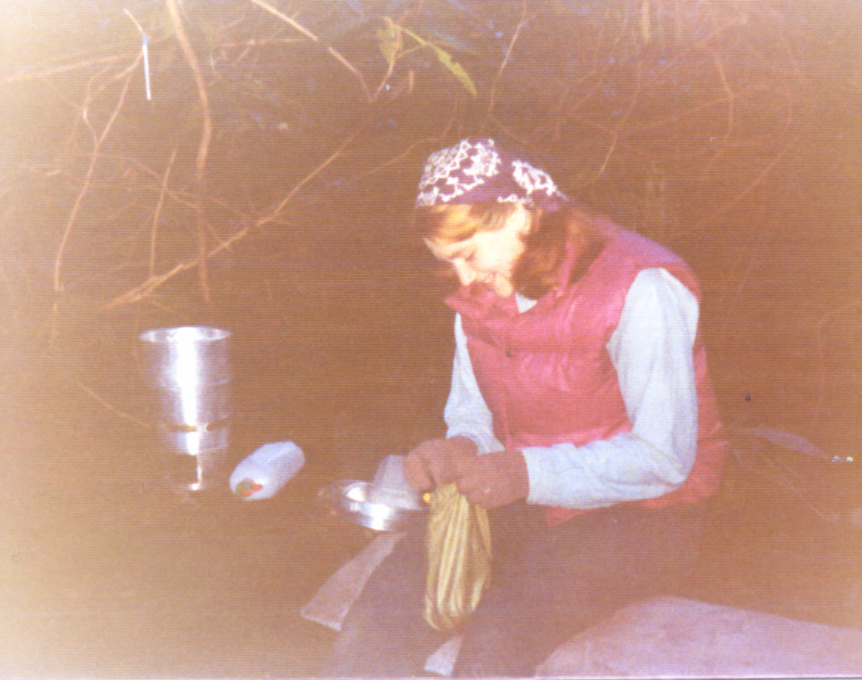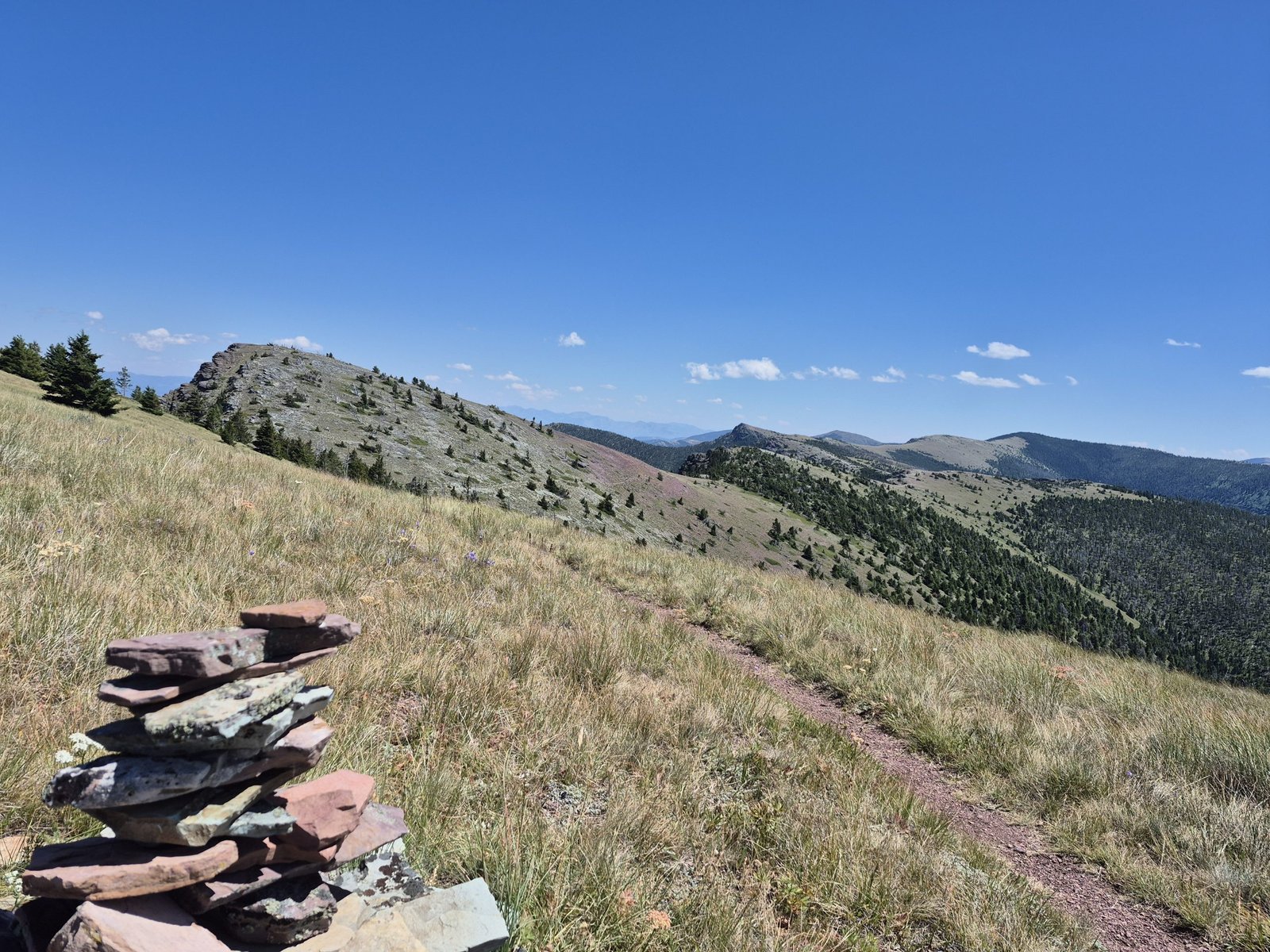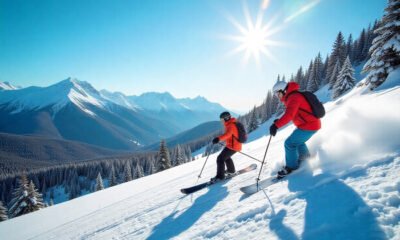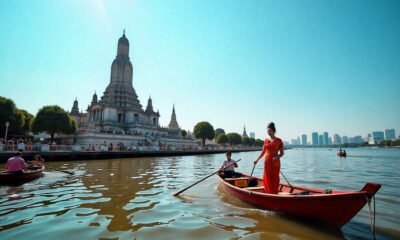Destinations & Things To Do
Indonesia’s New Tourism Era Redefining Travel with Sustainable Tourism Initiatives on Islands Like Komodo, Maluku and Other Hidden Gems

Published on
August 8, 2025 |
By: TTW News Desk
Indonesia, a nation made up of over 17,000 islands, is a treasure trove of stunning landscapes, diverse cultures, and breathtaking natural wonders. While many of its remote islands are still relatively untouched, the country’s tourism strategy remains heavily focused on Bali, Indonesia’s most famous island. Bali’s appeal is undeniable, but the pressures of over-tourism are mounting, highlighting the urgent need for a more balanced approach to tourism development. As Bali faces overcrowding and environmental strain, Indonesia’s lesser-known regions hold the key to unlocking the country’s true tourism potential.
Bali’s Overcrowding Dilemma
Bali has long been the jewel of Indonesia’s tourism industry. Its unique blend of rich culture, serene beaches, vibrant nightlife, and lush landscapes attracts millions of visitors each year. However, the island’s popularity is becoming a double-edged sword. As the number of tourists continues to grow, Bali struggles to manage the influx. Overcrowded attractions, increased waste, and a higher cost of living are just a few of the challenges facing local communities and the tourism sector. Bali’s infrastructure, while iconic, has not kept pace with its rising visitor numbers, causing logistical headaches and environmental degradation. It’s clear that continuing to concentrate the country’s tourism efforts on one island is no longer sustainable.
Beyond Bali: The Hidden Treasures of Indonesia
While Bali grabs most of the attention, many of Indonesia’s other islands remain underdeveloped yet brimming with unique offerings. Places like Maluku, Komodo Island, and the remote shores of Seram Island offer experiences that are far removed from the tourist-packed beaches of Bali. Maluku’s rich history and biodiversity make it an ideal destination for eco-tourism. The pristine waters, coral reefs, and cultural diversity make it a hidden gem for those seeking authentic experiences.
Komodo Island, home to the legendary Komodo dragons, is another destination that offers a once-in-a-lifetime opportunity to connect with nature. The island’s isolation and rugged landscapes are perfect for eco-tourism enthusiasts. However, despite their potential, these regions face a significant barrier to development—poor infrastructure. With limited flight connections, lack of quality accommodations, and inadequate transportation networks, reaching these places is challenging, which deters many travelers.
The “New Balis” Strategy: A Vision for Regional Tourism Growth
In an attempt to alleviate the pressures on Bali, Indonesia has introduced the “New Balis” initiative. This strategy aims to spread tourism across the archipelago and create new hotspots that can share the economic benefits. While the idea of “New Balis” holds promise, the execution has been slow. Many of the less-visited regions have yet to see substantial infrastructure investments or meaningful policy support. Without reliable transportation, good accommodations, and modern amenities, it’s hard to entice international tourists to venture beyond Bali.
Moreover, the initiative suffers from fragmented efforts between government ministries and local authorities. A cohesive, unified approach is necessary to ensure that tourism in these areas is not only possible but sustainable. Despite these challenges, the potential for growth in regions like Maluku, Komodo, and Seram remains untapped, and with the right investments, they could become thriving tourist destinations.
Building a Sustainable Future: A Roadmap for Success
For Indonesia’s tourism diversification to succeed, a more structured and comprehensive approach is needed. The key to unlocking the potential of these hidden destinations lies in building infrastructure—airports, affordable regional flights, and transport networks—that connects these islands to the rest of the world. Additionally, investments in sustainable tourism practices are essential to preserving the natural beauty and cultural heritage of these regions. Local communities must be actively involved in the development process, ensuring that tourism provides long-term economic benefits without compromising the environment or local traditions.
Furthermore, partnerships with international travel agencies and local operators could help promote these lesser-known destinations to global travelers. Highlighting eco-tourism opportunities, wildlife experiences, and cultural immersion could attract the growing segment of travelers who seek authentic, off-the-beaten-path experiences.
Conclusion: Reimagining Indonesia’s Tourism Landscape
As Bali faces the mounting challenges of over-tourism, Indonesia must look beyond its most famous island and tap into the vast potential of its lesser-known regions. With a clear focus on sustainable development, infrastructure improvements, and strategic marketing, Indonesia can diversify its tourism offerings and reduce the strain on Bali. Regions like Maluku, Komodo Island, and Seram have the potential to become the next big tourism hotspots, offering unique experiences and much-needed alternatives to the crowded tourist centers. By redistributing the tourism load, Indonesia can create a more balanced, sustainable tourism model that benefits both travelers and local communities for years to come.
Destinations & Things To Do
Day 93: The Katahdhin Stream Campground Miracle Arrives

- Zeroing nearby Hanover, NH (1756.1)
- 0 feet ascent, 0 feet descent
On Tuedsay, the 11th day of November, 1975, I stood at the Baxter State Park boundary, near Abol Bridge and gazed into mist knowing Katahdin was close. It was exactly 6 months to the day I had started hiking the Appalachian Trail. This was my ending point. It was an intensely emotional moment. I placed my hand on my breast and vowed never to climb the that mountain until I had completed the rest of the Appalachian Trail. Part of me knew it was a vow based on process. Don’t finish until you are ready. The emotional part of my younger self felt I did not deserve to climb Katahdin because I had failed at hiking all of the Appalachian Trail.
I kept that vow, even when I lived close enough to have ascended Katahdin. Now, just miles from completing all but Katahdin, I am afraid I cannot do it. I am afraid I am too old. I am afraid it will be too hard. I failed at my original thru hike. I am afraid I am not worthy.
Am I Worthy?
I was quite young when I did my original thru hike attempt. In my freshman year of college, I struck a deal with my mother than I would finish my Associate of Arts degree before I left. I guess that gave her one year to hold on to me before I bolted. I worked and waited and finished my AA. I was mature for my age, but still pretty innocent to the world having lived most of my life either in a tent, looking after the family, or studying.
Hiking the Appalachian Trail is hard now. Hiking the Appalachian Trail in 1975 was harder. There were no shuttles, no hostels, no trail angels, and most of all, for me, almost no other people around. 1975 was the first year that the total number of thru hikers exceeded 100, in part because of Warren Doyle’s group of 19 thru hikers.
I mostly hiked alone. Sometimes for days. I did hike with Warren’s group for a few days. They had a support van and I was lugging my stuff. After several 20+ mile days, I did a 34.6 mile day to keep up with them. I was painfully lonely.
That night, I arrived in camp after dusk. Everyone else had eaten and was in bed. I was so exhausted I could not even get my tent up. I knew it was going to rain so I rolled out my foot print and put my tent rain-fly over it and crawled in. A few hours later I woke up and felt around my sleeping bag. My tent footprint had a binding around it causing it to curl up. I was sleeping in a bathtub of water. I was so tired I just put my hands back on my bag and went back to sleep. Everyone was gone when I got up.
In my mind, I was not worthy. I could not keep up with the other hikers.
Worthiness is Not Really the Question
My current self looks back at my teenage self and feels compassion. Being alone for so long would make anyone a little batty. My feet never healed from continuous blisters caused by heavy, ill-fitting hiking boots. I hiked 6 months on the trail with less than $400 so my food supplies were scant even with the occasional package The Historian and my mom sent. I never told them I was hungry, I was too embarrassed because I thought my money should have gone farther. Sometimes I wonder how I got as far as I did. Worthiness was not the question. Exhaustion, pain, loneliness, and malnourishment were.
I have spent time in psychotherapy over the years and never pulled this belief out to examine it. Now, edging closer and closer to Katahdin, I have been thinking about it. I have also talked about it.
Although I felt shame in not finishing, I have lived beyond that. Every thru hiker who falls short of expectations must do that. It is not a simple thing because it is you who failed you. Your feet, your aerobic condition, your judgement that brought you to the trail, and it is you that pulls you off.
I love that The Trek includes stories from those of us who “fall short” of a full thru hike. Although we set a full thru hike as the “normal goal” it really is not normal at all. Even doing part of a major hike is an amazing accomplishment.
Last year, during a stay at the Looking Glass Hostel, we visited with a number of Continental Divide thru hikers at the end of their journey. Most were Triple Crowners. I confessed my unease with having “failed” at my thru hike and to a person they said I was selling myself short. They pointed out what I did was a remarkable achievement.
I knew that it was remarkable and hearing it affirmed my accomplishment. Nonetheless, that young self who stood at the base of Katahdin still has a place in my older self. I view her with kindness and understanding, but she is still there.
Katahdin Stream Campground Reservations
One of my fears both for my younger self and for my current self is that I won’t be able to get the proper permits to ascend Katahdin. Those are realistic fears!
After speaking with the helpful people at the Appalachian Trail Hostel and Outfitters, I had renewed hope that getting the permit would be possible. They explained that if I could not find a reservation, they could almost always help people get on another person’s permit.
The permitting system is pretty straightforward. Only a few people are allowed to climb on any one day. You can only stay overnight in Baxter park with a permit and then only at designated places. You get a permit by having the appropriate camping reservation, or by walking in from the 100 Mile Wilderness (presumably as a thru hiker) and being one of the first 12 people to sign up for the selected day.
We originally planned to walk in from the 100 Mile Wilderness. I had done it but wanted to share it with The Historian so was going to hike it again. About a month ago, with all the heat, we decided that we just did not have it in us to do that.
Consequently, we would have to either have Katahdin Stream campground reservations or we would have to stay in Millinocket, arise very early, take a 45 minute shuttle, climb, and get down by 4 pm to get the shuttle back to Millinocket. I knew we could not finish by 4 pm.
The Miracle Occurs
On this Sunday morning, I checked one more time to see if there were any camp sites open at Katahdin Stream Campground. Two consecutive nights were open, although at different sites. It was sooner than we planned to be there, but a quick calculation said we could make it if we hurried. The people at Baxter Park reservations office helped link the two nights together. The kind lady said she could not believe there were open sites.
Not fully understanding how we were “arriving” to climb Katahdin, she admonished me that Katahdin was hard. I told her I understood that. We had a long discussion about my journey from 1975 to today, which included many challenges. By the end of our conversation, she was encouraging me and both of us were misty-eyed. I promised I would stop by after finishing to have a cup of tea with her.
The Die is Cast
We have reservations to climb Katahdin. It is only a week away. I must hurry along to get there because I want to keep the reasonable part of my vow. I still do not want to climb Katahdin before having completed the rest of the trail. I do not question my worthiness. The Mountain has invited me and I will answer.
This website contains affiliate links, which means The Trek may receive a percentage of any product or service you purchase using the links in the articles or advertisements. The buyer pays the same price as they would otherwise, and your purchase helps to support The Trek’s ongoing goal to serve you quality backpacking advice and information. Thanks for your support!
To learn more, please visit the About This Site page.
Destinations & Things To Do
2026 Dodge Durango SRT Hellcat Jailbreak Edition

If you’re thinking about ordering the 2026 Dodge Durango SRT Hellcat Jailbreak edition, be prepared to be overwhelmed.
As the ‘SRT Hellcat’ name suggests, this special-edition Durango will carry on with the iconic HEMI V-8 under the hood. While Dodge and its siblings at Stellantis, Jeep and Ram, pulled and/or were pulling the plug on the Hemi, it lives on as EPA rules are relaxed and new management takes the reins at the car maker.
That, in itself, will likely draw plenty of attention from midsize SUV buyers. But the Jailbreak package has more to offer. A lot more.
Jailbreak = Endless Choices
Have your eye on a particular shade of red, but don’t like the wheels or, perhaps, the interior trim it normally comes with? No problem. That’s what the Jailbreak package is all about.
“We’ve always been a brand about doing things our way,” Dodge CEO Matt McAlear said during a backgrounder briefing on the brand’s newest offering. “So, why shouldn’t customers have the same opportunity?”
To start with, you can order the 2026 Dodge Durango SRT Hellcat Jailbreak in a 5-, 6- or even 7-seat layout. And you can opt for a standard or upgraded sound system, a power sunroof, perhaps, or a trailer tow option. Not enough? How about a rainbow of colors.
Add to the list of options:
- Six exterior colors – plus a Gloss Black hood
- Six different wheels
- Four Brembo brake caliper colors
- Six exterior badge choices
- Five dual stripe designs
- Five interior seat colors
If that isn’t enough, you even can choose from five different seatbelt colors.
The HEMI Lives Another Year
Dodge likes to call itself the “Brotherhood of Muscle,” but it alienated a lot of long-time loyalists with some of the moves its made lately. It not only ended production of the classic Charger and Challenger muscle cars — replacing them with the all-electric Charger Daytona — but also ended the run of the HEMI in many of its vehicles.
Dodge wasn’t alone, sibling brand Ram also pulled the iconic V-8 from production. Now, the Stellantis is bringing the HEMI back in a wide variety of vehicles, with more likely to be announced soon.
The specs haven’t changed on the Hellcat HEMI. The supercharged 6.2L engine will punch out 710 horsepower, 645 pound-feet of torque, and one deafening roar when you put the pedal to the metal.
Based on 2025 numbers, the monster motor should launch the 2026 Durango SRT Hellcat Jailbreak edition from 0-60 in about 3.5 seconds.
We’ll have to wait for final pricing, and that could vary widely depending on what options each buyer chooses.
Look for the SUV to reach U.S. showrooms this coming fall. But, if you want one, you can order one as soon as August 13th at your local Dodge dealer.
Destinations & Things To Do
Short Cuts and Cut Shoes

Hiking the CDT sobo Lincoln to Helena
Trail Town!
Lincoln was a great trail town! The owner of a bar lets hikers camp behind their building on a perfectly flat, green meadow. After setting up our tents there, we strolled through town in our rain gear on that hot sunny afternoon, to get to the free showers. Not our most glamorous moment for sure. But then we had a drink, a full bag of snack cucumbers and hummus on a bench behind the laundromat. Definitively a glamorous moment from a thru-hikers perspective!
We made sure to eat a lot of tasty town food in between all our tasks (laundry, charging electronics, resupply, communication with friends and family, blogging, planning the next section) and everywhere we were met friendly. While hobbling back to our tents, bellies full with good old greasy pizza, I couldn’t help but gush about the blinking lights, the buildings, the wood carving festival…! “Yeah I guess it’s very Americana,” Bugs grinned.
The hitch back to trail was easy: We danced and smiled by the side of the road with the “hiker to trail” sign that a dear friend of mine had written on my tent’s ground sheet back home. Nearly immediately, we got a parked pick-up driver’s attention. During the drive, we not only learned how he moved to Lincoln for love, but he had also a lot to say about the local mountain lion population. I tried not to listen too much to all his different anecdotes. I’m ok with bears now, but mountain lions just scare me.
It’s about to get painful
Bugs and I were ready to crush miles as we started hiking along the beautiful ridgelines allowing majestic views deep into Eastern Montana.
But soon, I got slower. My heel had already been bugging me in the last section, now the pain was getting excruciating! After 19 miles of slow hobbling and holding back tears I stumbled on a road. Bugs jumped out of the shadows on the other side of the road, looking worried.
“Are you ok?”
“No, not at all. I might need to camp here.”
Slowly, we made our way down to a spring. I was flinching with every step, leaning onto my trecking poles and limping heavily. At the spring, we met a lovely hiker again that we’ve last seen in East Glacier. He and Bugs were talking but I just sat on a stone holding my foot, trying not to start crying. I had taken the shoe off and the numbness from the constant pressure of hiking started to wear off. Now the heel was throbbing with intense pain, hot to the touch, although I was barely able to touch it. The others asked me something, but I was unable to understand nor speak, I just shook my head and bit my lip. They understood.
Desperate times – Desperate measures
It took me a while to breathe through the pain and ask Bugs Bunny if he could bring me some water to cool my foot. Then I fished the tiny nail scissors out of my pack and grimmly began to cut away the heel of my shoe.
“This is either the most stupid thing I could do out here. Or brilliant.” I thought to my self. After all, my shoes were probably my most crucial piece of gear. But I’ve given up so much to be out here, I was not going to let this pain stop me.
Turned out, it was the a genius move! So much so, that I cut my secound shoe shortly afterwards. Sure, I had to come up with a special lacing technique to keep everything in place. Sure, everything was a bit wobbly and unstable afterwards, which was hard for my ankles. Sure, a lot of dirt, pine needles and tiny stones would get into my shoes now. But I was able to hike out the next morning and continue since.
Short cuts and road walks
From then on, Bugs Bunny unleashed his alternate – finding – superpower, constantly looking for short cuts. With my still badly inflamed heel we stumbled along dirt roads, trying to avoid as much elevation gain as possible, since ascends hurt especially bad.
So we made our way to the Llama Ranch – apparently an Alpaca Ranch – and enjoyed our first time trail magic treat on their porch with fresh sandwiches and sodas.
Our unmarked alternates lead us into low and dry valleys, where eventually we ran out of water. It wasn’t after walking past several bones and skeletons of livestock that we finally found a trickle.
Tired from the unexpected complications we finally made it into Helena fir our first, well deserved zero day.
This website contains affiliate links, which means The Trek may receive a percentage of any product or service you purchase using the links in the articles or advertisements. The buyer pays the same price as they would otherwise, and your purchase helps to support The Trek’s ongoing goal to serve you quality backpacking advice and information. Thanks for your support!
To learn more, please visit the About This Site page.
-

 Brand Stories3 weeks ago
Brand Stories3 weeks agoBloom Hotels: A Modern Vision of Hospitality Redefining Travel
-

 Brand Stories2 weeks ago
Brand Stories2 weeks agoCheQin.ai sets a new standard for hotel booking with its AI capabilities: empowering travellers to bargain, choose the best, and book with clarity.
-

 Destinations & Things To Do3 weeks ago
Destinations & Things To Do3 weeks agoUntouched Destinations: Stunning Hidden Gems You Must Visit
-

 Destinations & Things To Do2 weeks ago
Destinations & Things To Do2 weeks agoThis Hidden Beach in India Glows at Night-But Only in One Secret Season
-

 AI in Travel3 weeks ago
AI in Travel3 weeks agoAI Travel Revolution: Must-Have Guide to the Best Experience
-

 Brand Stories1 month ago
Brand Stories1 month agoVoice AI Startup ElevenLabs Plans to Add Hubs Around the World
-

 Brand Stories4 weeks ago
Brand Stories4 weeks agoHow Elon Musk’s rogue Grok chatbot became a cautionary AI tale
-

 Brand Stories2 weeks ago
Brand Stories2 weeks agoContactless Hospitality: Why Remote Management Technology Is Key to Seamless Guest Experiences
-

 Asia Travel Pulse1 month ago
Asia Travel Pulse1 month agoLooking For Adventure In Asia? Here Are 7 Epic Destinations You Need To Experience At Least Once – Zee News
-

 AI in Travel1 month ago
AI in Travel1 month ago‘Will AI take my job?’ A trip to a Beijing fortune-telling bar to see what lies ahead | China













You must be logged in to post a comment Login